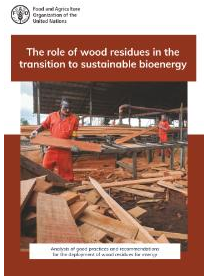The role of wood residues in the transition to sustainable bioenergy
Analysis of good practices and recommendations for the deployment of wood residues for energy
 This report provides an overview of the potential use of wood residues as feedstock for bioenergy production as part of the transition towards a sustainable and circular forest bioeconomy. While data and examples are abundant from developed countries, a specific focus will be put on the role and potential of wood residue-based energy in developing countries.
This report provides an overview of the potential use of wood residues as feedstock for bioenergy production as part of the transition towards a sustainable and circular forest bioeconomy. While data and examples are abundant from developed countries, a specific focus will be put on the role and potential of wood residue-based energy in developing countries.
The study is structured around the following four main objectives, each corresponding to a chapter:
- define key terms and concepts related to wood residues and bioenergy value chains (Chapter 2);
- characterise the status and trends in renewable energy, modern bioenergy and the forest-based bioeconomy and evaluate the theoretical potential of wood residues for energy (Chapter 3);
- determine general success factors, common lessons learned and constraints on the utilization of wood residues for energy (Chapter 4); and
- formulate recommendations (Chapter 5).
The overall aim is to inform new policies and programmes through the identification of optimal conditions whereby the use of wood residues for energy can offer a competitive alternative to other fuels in developing countries and contribute towards reaching the UN SDGs.
Click here to read the full document.